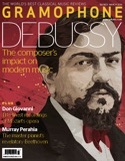Texte paru dans: / Appeared in: |
|
|
Outil de traduction (Très approximatif) |
|
|
Reviewer:
Lindsay Kemp
Thus, for instance, while Accademia Bizantina here consist only of baroque string quartet, harpsichord and organ, we get colour variations ranging through strings doubled by organ, strings with harpsichord or organ continuo, solo harpsichord (Dantone) or organ (Stefano Demichelo) as well as the two in duet, violin and harpsichord, and violin and cello. Sometimes more than one of these combinations appears within a fugue. And although these choices often seem to have been made along structural lines (to demarcate the sections of a double or triple fugue, highlight subject entries or help delineate an unwinding canon), the results are always pleasing in themselves: the organ’s tootling brings an archaic air, the harpsichord stealthy precision, and the strings firm but shapely phrasing. Dantone has other ways of maintaining variety and stressing the work’s human side, however. Every fugue is treated on its own stylistic terms, so that Contrapunctus 6 really is ‘im Stile francese’ complete with wispy appoggiaturas and other ornaments, 11 is an endearingly lumbering dance, the strings lift and lilt in 12 (Rectus), the solo harpsichord in Canon per augmentationum in contrario motu is unexpectedly expressive, and the organ at the end of the Canon alla decima is permitted a bold cadenza. The final fugue is left in its uncompleted state, though in accordance with Dantone’s feeling that this was Bach’s choice the big moment is not so much a dramatic leap into the void as a hasty rise from the workdesk – an arresting way to end a well thought-out and executed recording. |
|




